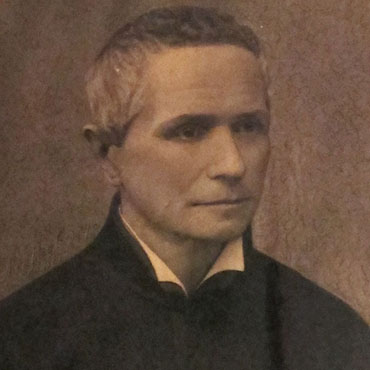Born at Ponte Buggianese in 1822 and baptised Giulio Isdegerde, Filippo Cecchi studied with the Piarists of Florence, with Giovanni Inghirami, Eusebio Giorgi, Giovanni Antonelli and Numa Pompilio Tanzini as his teachers. At that time Eugenio Barsanti, Everardo Luigi Micheli, Celestino Zini and Alessandro Serpieri, all younger than Cecchi, were also sitting at the same desks. Before he became a priest, he taught Latin at Urbino and mathematics and physics at Volterra. He became a priest in 1846 with the name of Filippo and in 1848 he became one of the teachers at the Scuole Pie of San Giovannino.
He wrote articles on physics from the middle of the fifties and was also involved in practical applications for public use, such as the electric lighting in Piazza Pitti in Florence, on the occasion of the visit of Pope Pius IX, and the invention of a balance barometer and a metal thermometer for the Loggia dell’Orcagna. The last two were produced together with Giovanni Antonelli, with whom he repeated the experiment of Foucault’s pendulum, at the time when the lightning conductors on the dome of the Duomo di Firenze were being replaced.
In 1872 he succeeded Antonelli as director of the Osservatorio Ximeniano. He specialised in geophysics and meteorology and, as well as promoting the construction of various meteorological observatories, he devoted his time to the planning of a number of seismographs, such as the electric one with moving smoked paper and the microseismograph, which were awarded the gold medal at the National Exhibition in Turin in 1884. Cecchi was one of those who were had an influence on the education of Raffaello Caverni, both at the Scuole Pie of San Giovannino and the Osservatorio Ximeniano. He died in Florence in 1887.

